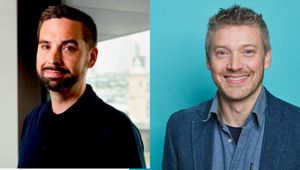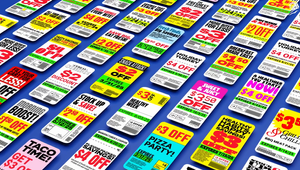
The Tech Spectrum of SXSW

2017 marked my first visit to SXSW. The beauty of SXSW Interactive is that it’s more than a tech festival; it’s a trends festival. Just like the assortment of tacos in Austin (who knew pad Thai tacos exist?), the spectrum of trends ran the gamut and there was real variation in people’s vision of the future. Here are some of the trends that dominated:
Spectrum of Life: Baby Tech to Death Tech
As Gen Z and millennials enter the next stage of life—marriage, childbirth, home ownership, insurance, estate planning—they bring with them a discerning eye for when and where technology can be used to streamline processes and solve inefficiencies. They will now encounter these milestones through a lens of entrepreneurship and innovation—a result of coming of age with the Internet and apps, iPhones and AI.
We saw at CES and now at SXSW that baby tech is on the rise—from smart breast pumps to sanitization packs, and smart cots that detect when there’s been a diaper leak. Bloomlife, a women’s health company, is designing the future of pre-natal care combining data analytics with wearables.
On the other end, there’s a big opportunity in a dated and stagnant industry—death care. Two and-a-half million people die in the United States per annum, according to the Center for Disease Control and Prevention. At SXSW, OpenIDEO discussed their radical design thinking challenge to re-imagine the dying process, including helping to reduce unmet needs, pain management or to help us live fully even in death, soliciting opinions from all the stakeholders including medical providers, families and patients. “What if we learned to talk about death when we’re young?” said Jason Rissman from IDEO. He is on to something. Taking away the taboo and fear from an inevitable ending, could help us evolve technologies and practices.
Silicon Valley has some interesting start-ups launch in the past few years in this arena. Willing looks to do for estate planning what TurboTax has done for tax returns. Parting is Kayak for funeral homes, with price comparison and searchable by ZIP code. One of the more bizarre offerings is the app, With Me. Designed to help mourners overcome their grief, With Me creates a virtual avatar of loved ones, allowing you to take selfies and interact with them. (Personally, I found it creepy)
Spectrum of Reality: Immersive to Invisible
It’s no surprise the festival was full of VR, AR, and AI experiences. It’s what I call the spectrum of reality. On one end is total digital immersion—aka virtual reality. On the other end is digital invisibility (think voice control, Alexa and Google Home). Voice activation allows for invisibility since there’s little interaction with a physical product. In the middle sits augmented reality or mixed reality. Although we have yet to witness an AR product that has seriously piqued consumer interest—Google Glass is a famous flop—many are touting AR as the way forward.
VR has been viewed for many years as the next hot tech breakthrough. So far, we’ve all been disappointed by the hype. The products continue to get better, but unless you’re a serious gamer, the use-case is still limited. I believe VR-like immersive experiences will only scale, if applicable in a more social context. As Chris Sacca, early investor in Uber and Twitter, said at SXSW, “VR deprecates every other sense we have - it is all encompassing and doesn't fit into our existing senses and lifestyle.”
While some say the future is complete immersion, others are saying the future is in invisibility. We’ve gone from imagining a future with our faces inside headsets to a future where digital interaction is purely vocal. These listening device innovations, called Hearables are touted to become over a $40 billion market by 2020.
These include devices and wearables that enable communication between people and between people and machines. The technology is about solving all needs. Now the goal is to have a single device that mitigates one’s hearing loss and also connects them to all their content. Translation services and geo-tagging capabilities will start to see a lot of use cases here, as the devices understand the context of the situation and personalize the information provided. There was also talk of brain sensing and thought gestures, where you can track and direct someone’s attention with your mind, but the robustness and accuracy of that technology is far away.
Spectrum of Bots - Complete Automation to Human Interaction
Chatbots were also a big point of discussion this year. Facebook’s chatbots apparently hit a 70% failure rate, and couldn’t handle user requests without human interaction. So Facebook is strategically narrowing the scope of what their chatbots can do and instead ramping up on AI research to evolve the technology. I do believe though that marketing on messaging platforms is here to stay, but on what platform and with what technology is the real question.
The thought developers put into making bots more human is quite fascinating. They build in humour as a way to connect with their users and build in empathy. For example, many developers try to never show the same error message twice, in the hope of not tiring out the human with the “I don’t understand you” loop. The more human the bot is, the more likely someone is to develop an emotional attachment to the bot.
Aiva, a text message based bot for real-estate agents, anticipates needs and prompts you with information instead of waiting on you to interact with it for predictable tasks. Its builders have said, just like a good assistant, an AI technology that is proactive versus just reactive is more valuable to their agents.
The lowest hanging fruit in the bot world is customer service. With the currently available technology, I believe an interaction could start with the bot, but has to hand off to a live chat agent. In this context, consumers are highly engaged and possibly emotionally charged, so if an issue is unresolved with automation, seamless transfer to a human who can empathize is a must.
More creative and potentially fully automated chatbots are ones for brand awareness and discovery. Activision’s Call of Duty, last year, very successfully (over 6M bot interactions) launched a chatbot to engage with fans and publicize the upcoming launch of the game. Brands like American Eagle Outfitters have used chatbots to help customers shop for bras.
Researchers and news organizations are also building AI and bot tools to automate the fact-checking process. ClaimBuster is one such tool that can sift through massive amounts of text to fact-check claims. Also on the horizon, instant pop-up fact-checking bots on live TV.
Spectrum of Community: Individual to Global
Inclusivity and diversity of individuals has been top of mind for many this year. The disabled or the differently-abled community is much larger than many of us think and, brands, advertisers, and innovators are starting to realize the importance and value this community brings. Runway of Dreams works with top fashion industry brands to make clothes accessible to the differently-abled community by utilizing wearable technology. NextBillion.org is a community connecting people with visible and invisible disabilities with industry leaders for mentorship opportunities, and access to jobs and resources.
Sustainable tech was a big theme on the SXSW Showcase floor. From Terrafarm, which provides ways to grow food sustainably in a container with solar powered LED lights to Avani, a biodegradable plastic bag that is edible!
In all, a very enjoyable SXSW packed with sessions and even some celebrity sightings. Mark Cuban stopped by, saying “software will automate software” and that he’s placing his bets on AI. Joe Biden spoke to a packed audience about his cancer foundation, Ryan Gosling was there for his movie, Song to Song, and the actors who play the Stark sisters stopped by to discuss all things Game of Thrones. From chatbots for every occasion to VR reimagined, we saw and heard it all in Austin. I’ll definitely be back next year for the BBQ, live music and more trends!
Mansi Jayakumar is Global Director of Innovation at Y&R and Head of SparkPlug Incubator.















